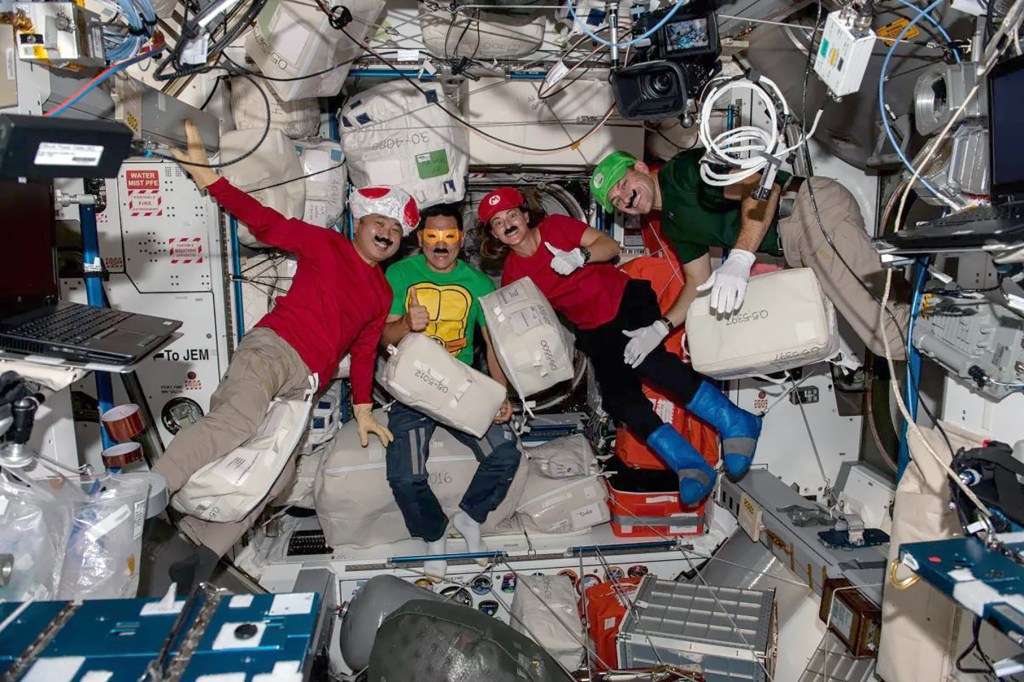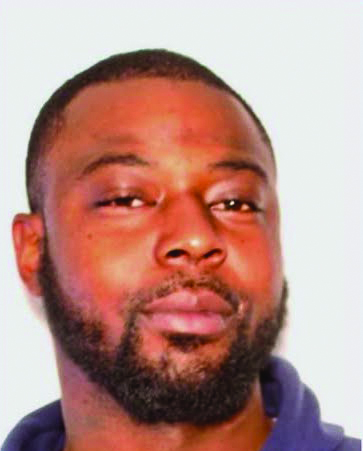OUR SPACE: Halloween in space!
Published 10:10 am Tuesday, October 22, 2024

- JAXA astronaut Koichi Wakata and NASA astronauts Frank Rubio, Nicole Mann, and Josh Cassada dressed up for Halloween 2022.
It’s about that time of year again — a tremendous overuse of the colors orange and red, with lots of purple thrown in, and enough candy to fill up the infamous Blue Hole off the coast of Belize: it’s Halloween!
Halloween, or its earlier version All Hallow’s Eve, is being celebrated all over the world in various cultures. While the Halloween we all known here is largely an American invention, in Central Europe young people sneak out of the house after dark and grab anything that’s not locked down — trash cans, window shutters, lawn furniture, bicycles and so on, and carry it to the town square. The morning after a crowd of slightly disgruntled citizens shows up to retrieve their absconded property, vowing to put everything into the garage the next year. And they will promptly forget about it — and so the cycle continues.
Here, Halloween is a big holiday for kids who get dressed up in costumes — from El-cheapo ready-made things to carefully crafted disguises – going from door to door or store to store downtown asking for candy (nobody ever seems to avail themselves of the “trick” option). Adults have costume parties and indulge in candy gorging when nobody’s looking.
Trending
Spookiness is the theme of the day, especially for the grown-ups. Haunted houses are springing up and get ready to scare the living daylights out of daring visitors. But it’s generally all in good fun — a good scare gets the heart going and kicks your blood flow into high gear.
It’s a little different for the astronauts living and working on the International Space Station (ISS). The last thing you want in space is a scary thing, and yet scary things are part of everyday life. There are currently about 50 leaks or so-called “areas of concern” on the ISS, and that’s a real scare, not a fun one. Granted, the ISS has had leaks since Day One — it’s just really difficult to fit together a habitat of this size – built in several different countries, no less — and have it fit together 100%. Materials used on Earth to make things airtight don’t work well or at all in space, so excellent fit is a must. Since the ISS is pressurized and there is a vacuum on the outside, air will always try to escape, and even microscopic gaps or holes will contribute to air loss. Most of them are very closely monitored and patched from the inside as much as possible, and every time the airlock is being used for spacewalks there is a normal amount of air loss, but little leaks can quickly become big ones, weakening the surrounding structure and possibly leading to catastrophic failure. It’s a scenario nobody wants to envision, but the astronauts have to be ready for it anyway. Some sections of the ISS are closed off as much as possible as a precaution when there is less traffic, like during the astronauts’ sleep periods (it’s never really night there for longer than 45 minutes at a time, 16 times a day).
But apart from those real-life scares there are the more fun ones, and some of them are downright fascinating! Astronauts have been known to dress up in Halloween costumes, which come at a premium, since everything non-essential going to the ISS costs a lot of money, but the upside of those little extravaganzas is that they help the astronauts live a more normal life, which is a major contributor to their mental health. Fun is necessary when every minute of your very long work day is planned out, and every task is a high-stakes endeavor!
That said, creepy-crawlies that are a Halloween staple on Earth are also popular in low-Earth orbit. Loyal Our Space readers will recall a feature about spiders in space — the so-called Spidernauts. Spiders that spin beautiful wheel-shaped webs on Earth have trouble doing that in space, suggesting that they, too, use gravity as a means of orienting themselves. Their webs ended up looking quite chaotic and more like those haphazard types you see in bushes laden with the morning dew — and those webs are also quite effective in fly-catching! Another interesting tidbit was that the spiders lay in wait facing away from any light sources, which obviously made it easier to keep all eight (or more) eyes on their web.
Blood and bones are elements that play a big role on the ISS year-round. The loss of calcium in bones during prolonged exposure to microgravity is well documented, and there is a lot of research going into preventing or minimizing this loss, which will be extremely important for astronauts on long-duration missions. Blood components are also undergoing changes, and of course there is the always-present danger of radiation damage. Astronauts are quite used to being pin cushions before, during and after spaceflights, as blood tests are pretty quick ways to monitor your overall health, and science is constantly finding new markers indicative of medical issues.
Halloween is supposed to be a fun event, but let’s not forget that even the fun stuff on the ISS can benefit us all down here on Earth! Learn more about the many scientific and medical research projects on the ISS at https://www.nasa.gov/international-space-station/space-station-research-and-technology/ .
Trending
Beate Czogalla is the Professor of Theater Design in the Department of Theatre and Dance at Georgia College & State University. She has had a lifelong interest in space exploration and has been a Solar System Ambassador for the Jet Propulsion Laboratory/ NASA for many years. She can be reached at our_space2@yahoo.com





